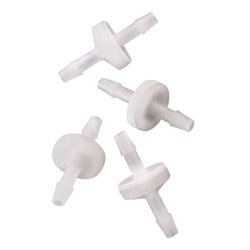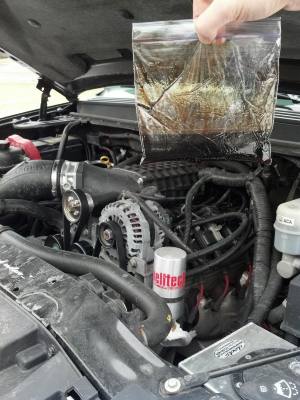Exactly,
Theres a few things that cause oil in the intake.
Improperly designed PCV system<~~~~~~~~
poor ring seal, which creates high crank case pressure.
oil vapors in the air in the crank case.
Gasoline vapors in the crankcase.
So what happens is the manufactures introduce a Positive crank case ventilation system, aka PCV system to remove the potentially explosive, corrosive gasses from the crank case.
This has 2 effects, removing those gasses and helping ring seal by introducing a vacume into the crankcase instead of positive pressure.
What the catch can does is intercept and trap the Heavy particles of oil, in attempt to stop them from being introduced into the intake, thus oiling the walls of the intake, ruining sensors, gunking up valves and valve seats aswell as sparkplugs.
Aswell as being burnt in the combustion chamber and being turned into rock hard Carbon buildup on top of pistons, the combustion chamber itself, the bottoms of your valves and on top of the rings.
Some times in extreme cases carbon will flake off and get lodged inbetween a piston and the cylinder wall, Scratching the wall, piston and ring. Causeing loss of compression in that cylinder.
The carbon can also lock up or freeze rings from movement causeing a bad seal and loss of compression.
If a carbon flake gets lodges between a valve face and seat it can bend (catastrophic failure here, as in piston and valve contact) or severely scratch a valve and valve seat, causing loss of compression.
Carbon build up due to burning of oil from your PCV system in early stages builds up on the piston tops and valve bottoms, which creates "hotspots" which cause detonation as well as that puff of smoke you see alot of vehicals have from the exhaust when first started up from a cold condition.
The oil from the intake seeps into the combustion chamber and is burnt off immediately upon ignition.
This not only can destroy a engine, The ECU will sense the detonation, spark knock, and thus pull timing to stop the knock.
Resulting in loss of performance, from pure HP/TQ to MPG.
Not to mention the environmental issues of burning oil.
So. back on point, the Catch can acts as a expansion chamber that allows the hot gasses to cool off a slight amount aswell as slow down. allowing the heavy oil to drop from suspension and be collected in the body of the can.
As a by product of this it also collects moisture.
Alot of guys freak out when they drain the can and see milky oilly stuff come from it.
This is normal under most conditions.
But under extreme conditions it can also show a leaky head gasket or on old school engines a faulty intake to block seal. which its allowing hot water vapors to enter the crank case.
So. the bigger the can and the more baffles the can has the better.
You must! stay with a SEALED catch can, none of this vented stuff.
There is alot to explain why, but just trust me. it will really jack with your engine performance, UNLESS the engine is designed and TUNED for a open breather system.




